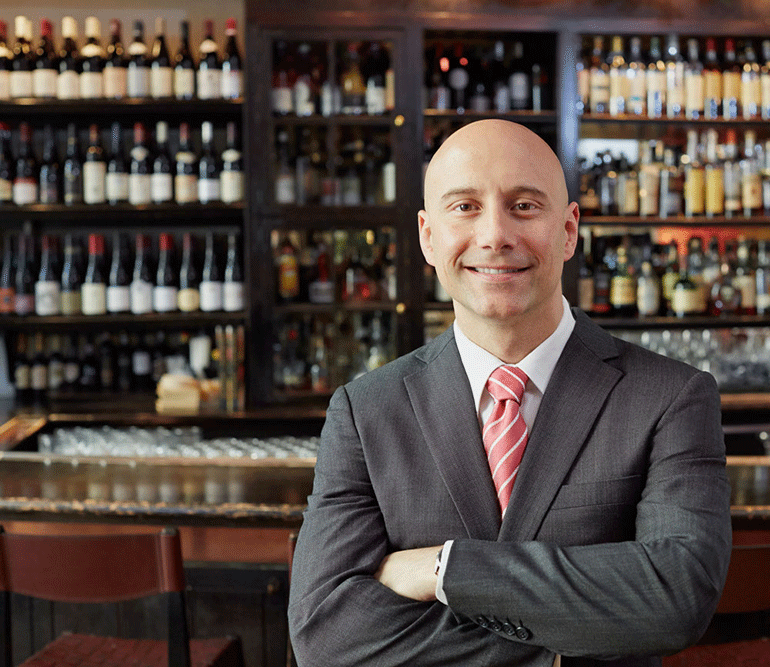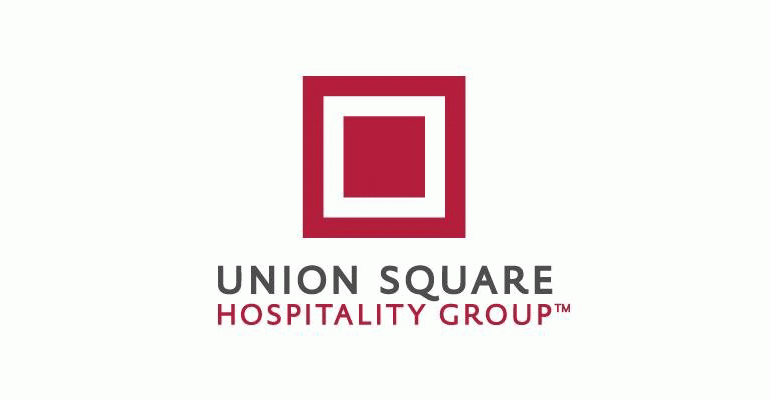Danny Meyer’s Union Square Hospitality Group sent shockwaves through the restaurant industry in late 2015 when it announced plans to eliminate tipping at all of its full-service restaurants in New York City.
Starting with The Modern, a fine-dining restaurant at the Museum of Modern Art, Meyer and his team eliminated the tip line on checks and raised menu prices in a model the company dubbed “Hospitality Included.”
The move intended to improve pay parity between front-of-house and back-of-house employees. Other restaurant operators have attempted similar shifts before and after USHG, but many found the challenge of managing customers’ sticker shock and easing servers’ concerns to be too difficult, and returned to tipping.
But USHG has expanded the Hospitality Included model, which is now in place at eight of its 13 restaurants — The Modern, Union Square Cafe, Gramercy Tavern, Maialino, North End Grill, Café 2, Marta and Daily Provisions.
The process hasn’t been easy, according to USHG chief restaurant officer Sabato Sagaria, and has required reworking the business model of each restaurant, which takes several months.
“Definitely our ambition was to complete it all within the first year, and that was very ambitious,” Sagaria said.
Successfully implementing the Hospitality Included model couldn’t be accomplished by simply raising prices and updating paychecks.
“In essence, it’s us opening a restaurant all over again,” he said.

USHG chief restaurant officer Sabato Sagaria
A necessary shift
USHG said the shift away from tipping was necessary because over the years, servers have automatically received pay raises as menu prices increased, while cooks have not.
Not only have servers’ tips risen in line with menu price increases, but the percentage that diners tip has gone up, too. Although a 15-percent tip was the norm 30 years ago, it’s now more than 20 percent, Sagaria said.
“On all those increases, we tipped more, and our back-of-the-house colleagues weren’t able to be brought along with us,” he said.
Although prices have increased, restaurant profit margins have not. By raising menu prices and giving management access to what would previously have gone into the tip pool — and therefore by law could only be distributed to front-of-house employees — the Hospitality Included model allows pay to be distributed more equitably, Sagaria said.
But that requires acceptance from front-of-house staff, which in turn requires clear communication with everyone.
The art of pricing
Consumer psychology is tricky. Sagaria provided an example: A customer is less likely to buy a $100 bottle of wine without a tip than an $80 bottle for which they would tip $20. The end result is that higher prices are likely to drive down the average check.
However, consumers see some prices are more elastic than others, and even experienced operators like USHG don’t know what will trip up customers until they try it.
For example, North End Grill saw orders of New York strip steak decline after implementing new Hospitality Included pricing, Sagaria said. In response, the restaurant added a “bar steak,” which was smaller, from a less expensive cut and let the restaurant give customers “what they wanted in a different way,” he said.
“That was an example of a lot of listening and making sure we were able to solve for those issues we came across,” Sagaria said.
Other prices are stickier, such as coffee or beer, which consumers perceive more like commodities. Prices for those items could only be raised by around 10 percent, Sagaria said.
“That’s what we’re basically monitoring and trying to understand,” he said.
Ramping up revenue sharing
It takes USHG about three months to do the modeling necessary to move a restaurant to Hospitality Included. For the next three months, front-of-house staff is guaranteed a specific wage. At The Modern, the wage was 21 percent of an employee’s sales — roughly equivalent to what a tipped employee would have earned — but the amount has varied at each restaurant, Sagaria said.
“That process has really helped us minimize turnover during the transitions [to Hospitality Included],” he said.
During the three-month period, management adjusts menu pricing and tinkers with the restaurant’s individual profit-sharing system.
“It’s like tuning a radio with four different knobs,” Sagaria said.
After that period, front-of-house staff participates in revenue sharing, with each employee getting a certain number of shares based on the number of hours they work and the level they have attained.
Whether a server works a Monday lunch or a Saturday dinner, his or her share is equal, which Sagaria said allows staff to work based on their personal lives, rather than the amount of tips they’re likely to make (although management still handles scheduling).
The system also encourages staff to do side work, and it sets the team up for success on the following day, “because it impacts them. That way, every hour they work they’re trying to earn more [for the restaurant] because they get more.”
Whether back-of-house staff participates in revenue sharing depends on the restaurant. Sagaria said some line cooks wanted a regular hourly rate, without worrying about the variability that comes with revenue sharing.
“That was a [restaurant]-level decision by our leaders and their teams based on what would help their recruitment and retention,” Sagaria said.
Back-of-house pay is higher than it was. Starting pay for line cooks at The Modern is $14 per hour, with a clear roadmap for how to earn more, Sagaria said. On average, line cooks saw about an 8-percent hourly increase in pay, but the amount varies among the restaurants, he said.
Paths for advancement
Revenue sharing and pay for hourly-wage kitchen staff are determined by an employee’s level.
For servers, “if you pass your training and go on the floor as a server, you’re at the 100 level,” Sagaria said.
As a server learns more about timing tables, wines by the glass and menu nuances, to the point where he or she could train others, the server would reach the 200 level, which translates to more revenue share points for hours worked.
If a server developed expertise in a special aspect of the restaurant, such as the cheese program, he or she could reach the 300 level.
“If we could clone you at the 300 level, then everyone would be making reservations to come back before they walked out the door,” Sagaria said.
The exact steps for advancement vary among restaurants, he said, but every job description has three distinct tiers outlined.
“The whole idea was that if we get everyone under the roof aligned to the common goal, that’s a win for everyone,” Sagaria said.
How the system is implemented varies.
“There was no manual as we went down this road,” Sagaria said. “Each time we did a rollout, we had a framework of what Hospitality Included was for us.”
That included eliminating the tip line on checks and creating clear steps for employee advancement. Managers at each restaurant determined the rest.
Committing to Hospitality Included
With eight restaurants converted and five more to go, USHG is committed to continuing the Hospitality Included model, Sagaria said. Back-of-house pay is rising and all of the restaurants that have adopted the model have stayed in business.
The model is also benefiting staffing. At The Modern, the only restaurant for which year-over-year comparisons are available, staff retention rose 5 percent for the period ended in March.
“We know that anything we did was not going to change anything overnight, but it was a real shift in our business,” Sagaria said. “If we can go up another 5 percent [in retention] tomorrow, that’s forward progress. If we want to make our staff more professional, that’s real progress. It might have taken us longer than we wanted it to, but it’s why we’ve committed to it. That’s how we see doing business in the future.”
Contact Bret Thorn at [email protected]
Follow him on Twitter: @foodwriterdiary





